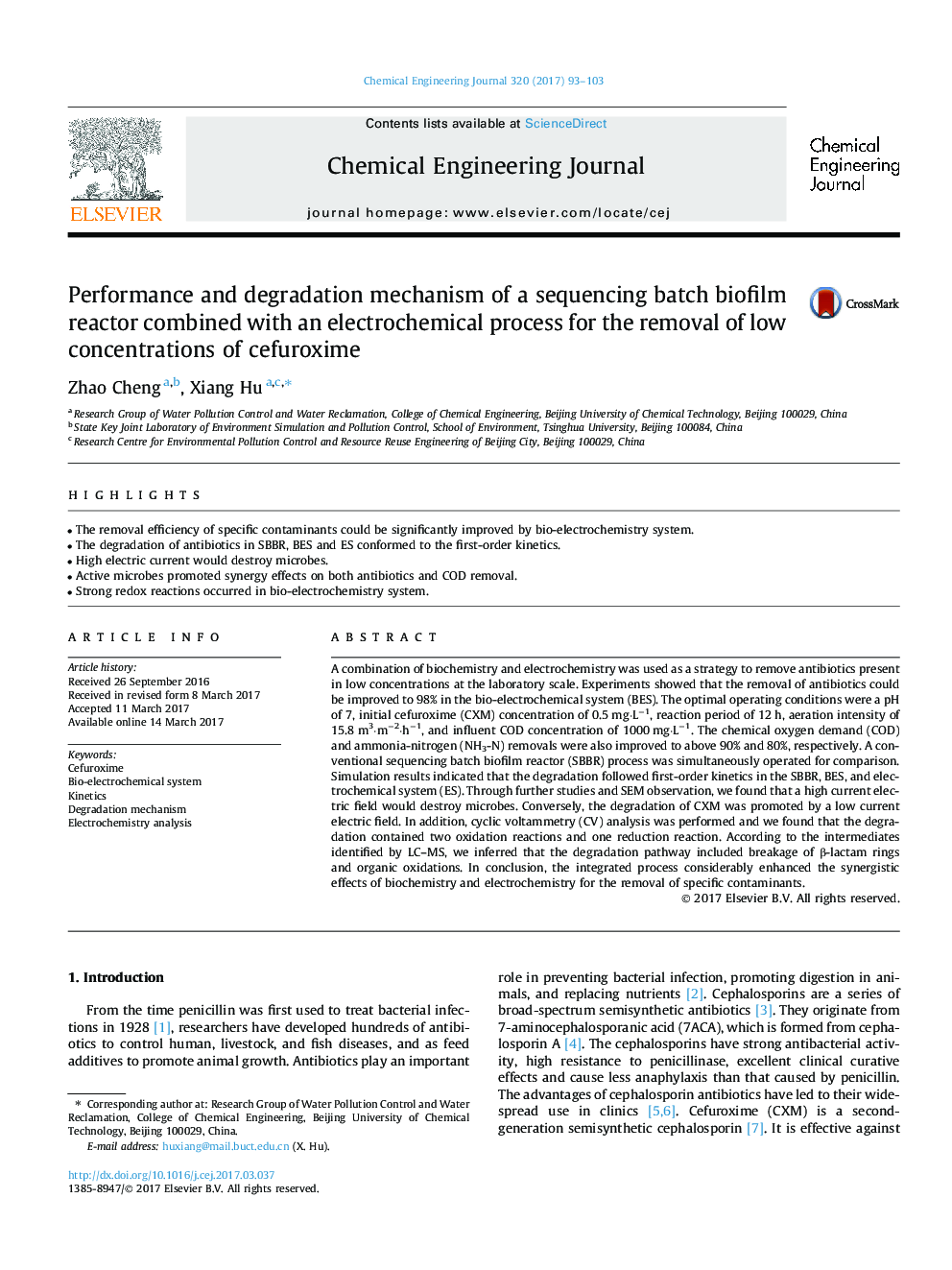| Article ID | Journal | Published Year | Pages | File Type |
|---|---|---|---|---|
| 6465918 | Chemical Engineering Journal | 2017 | 11 Pages |
â¢The removal efficiency of specific contaminants could be significantly improved by bio-electrochemistry system.â¢The degradation of antibiotics in SBBR, BES and ES conformed to the first-order kinetics.â¢High electric current would destroy microbes.â¢Active microbes promoted synergy effects on both antibiotics and COD removal.â¢Strong redox reactions occurred in bio-electrochemistry system.
A combination of biochemistry and electrochemistry was used as a strategy to remove antibiotics present in low concentrations at the laboratory scale. Experiments showed that the removal of antibiotics could be improved to 98% in the bio-electrochemical system (BES). The optimal operating conditions were a pH of 7, initial cefuroxime (CXM) concentration of 0.5 mg·Lâ1, reaction period of 12 h, aeration intensity of 15.8 m3·mâ2·hâ1, and influent COD concentration of 1000 mg·Lâ1. The chemical oxygen demand (COD) and ammonia-nitrogen (NH3-N) removals were also improved to above 90% and 80%, respectively. A conventional sequencing batch biofilm reactor (SBBR) process was simultaneously operated for comparison. Simulation results indicated that the degradation followed first-order kinetics in the SBBR, BES, and electrochemical system (ES). Through further studies and SEM observation, we found that a high current electric field would destroy microbes. Conversely, the degradation of CXM was promoted by a low current electric field. In addition, cyclic voltammetry (CV) analysis was performed and we found that the degradation contained two oxidation reactions and one reduction reaction. According to the intermediates identified by LC-MS, we inferred that the degradation pathway included breakage of β-lactam rings and organic oxidations. In conclusion, the integrated process considerably enhanced the synergistic effects of biochemistry and electrochemistry for the removal of specific contaminants.
